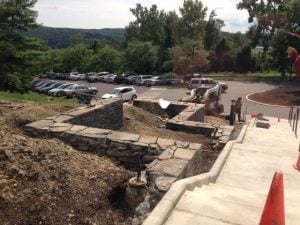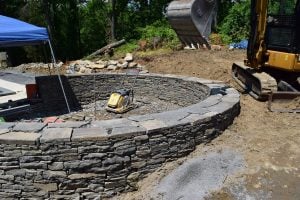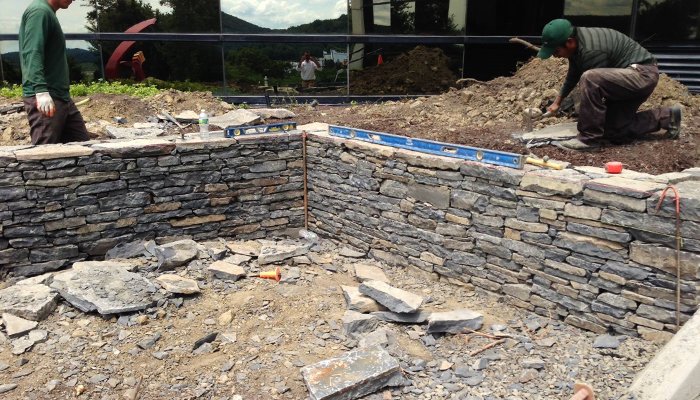Adding hardscape to your landscaping project can be a beautiful addition, serving to create a structurally appealing feature for your property. But, it also can help to solve water runoff issues that could be damaging to your home and its foundation. Retaining walls function to divert water away from the foundation of your home to control erosion, runoff, and silt accumulation. A retaining wall is used for supporting soil mass laterally so the soil can be retained at different levels on two sides. Their designs allow for them to retain water and runoff at a slope that wouldn’t naturally occur.
 When it comes to maintaining your foundation, the most important aspect is keeping soil moisture levels even. The best way to do this is by sloping soil away from your foundation, allowing water to drain away from it evenly.
When it comes to maintaining your foundation, the most important aspect is keeping soil moisture levels even. The best way to do this is by sloping soil away from your foundation, allowing water to drain away from it evenly.
Soil Erosion – displacement of the upper layer of soil
- When soil erosion occurs, it often washes away this slope. This leads to water pooling around the base of your home. Continued pooling can lead to structural damages and water damages.
Sediment Accumulation – when soil is pushed up against your house
- Soil buildup directs water unevenly resulting in water channeling around and under the foundation. This can lead to foundation shifting and cracking.
Before beginning your hardscape project, you’ll want to observe a few things.
- Watch how the water on your property moves across the area you are planning to install your retaining wall.
- Figure out what direction you’d like your water to move.
- Make sure the desired solution isn’t going to create other issues, and that it solves the initial problem effectively.
- Pick a path for your water to take and make sure this path will not compromise other areas of your property, like a driveway or patio.
- Ensure soil stabilization in this area where the wall will be built.
 Plan for proper wall drainage –
Plan for proper wall drainage –
The main goal of a retaining wall, as previously discussed is to hold back water and direct it to a desired area away from your home. However, water buildup against your wall isn’t ideal either. Because of this, building proper draining into your retaining wall is important. Perforated piles installed behind the wall as well as weep holes help to both control the water flow and the pressure.
Types of retaining walls –
- Gravity Retaining Wall – These types of walls use their own weight to stand up to the pressure of the soil that it is holding back. They are typically constructed out of stone, concrete or other heavy-duty building material.
- Wood/Anchored Retaining Wall – This type of wall uses anchored support beams constructed out of concrete.
- Cantilevered Retaining Wall – These types of walls are similar to gravity walls in that they use their own weight, but cantilevered walls also have a concrete foundation base that extends into the soil.
- Sheet Pile Retaining Wall – These are best in areas with loose and soft soil. They are typically constructed of steel or wood. Cables are anchored into the ground and attach to both the walls and another plank.
Typically, when it comes to adding functionality features to your property that are used to solve a problem, they are often eyesores or aesthetically unappealing. However, with retaining walls they are actually quite beautiful and can add to your home’s curb appeal. Retaining walls can be built out of many materials (concrete blocks, poured concrete, treated timber, rocks) giving you a nice size pool of style choices to choose from. These types of hardscaping projects help to protect your home and serve an important function, while also being beautiful! Contact Red Cedar today for your free hardscape and landscape consultation


